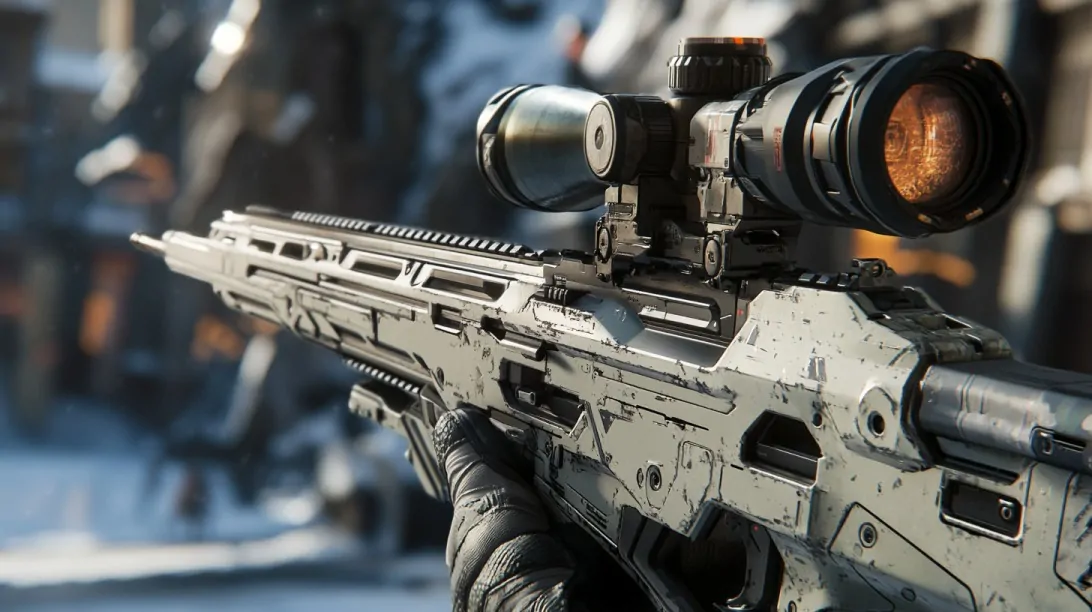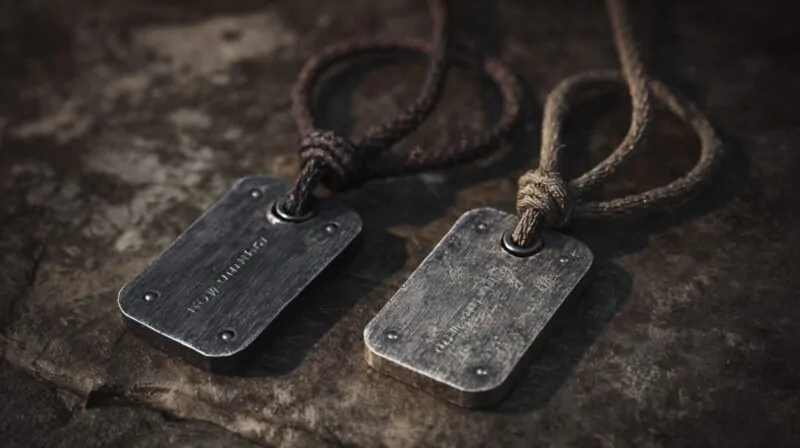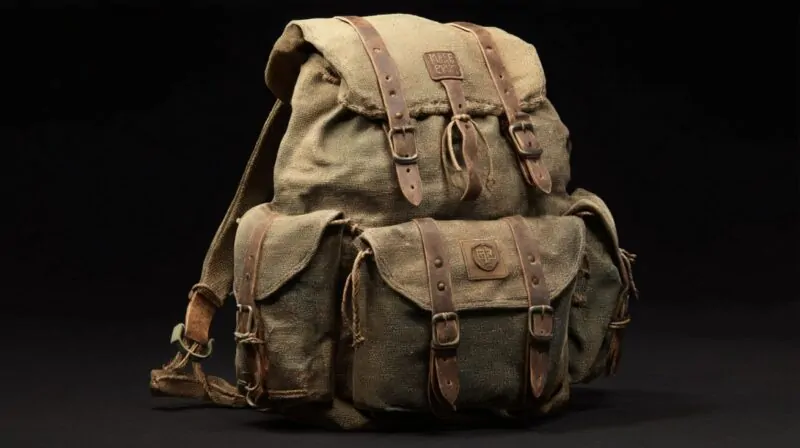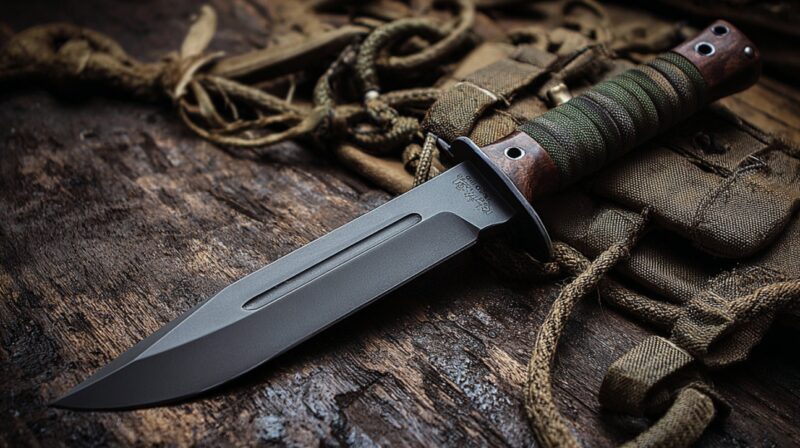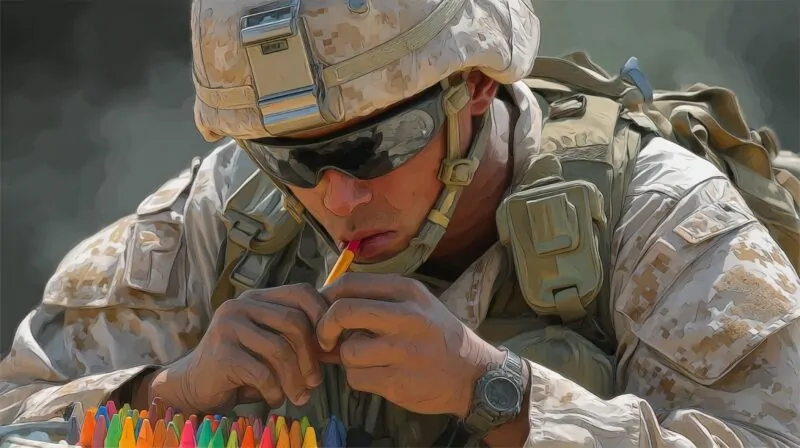Next Generation Squad Weapon (NGSW) marks the most significant evolution in U.S. Army firepower since the adoption of the M16 during the Vietnam era.
After decades of incremental updates, the Army is now turning the page with a system designed for the battlefield of tomorrow.
XM7 and XM250 promise a major upgrade in close-combat capabilities. Designed to provide enhanced accuracy, lethality, and adaptability, these systems move infantry into a new age of warfare.
Let us talk about these in greater detail.
Overview of the Next Generation Squad Weapon System
| Feature | XM7 Rifle | XM250 Automatic Rifle | XM157 Fire Control System |
|---|---|---|---|
| Type | Modular, gas-operated, magazine-fed rifle | Belt-fed, gas-operated light machine gun | Integrated fire control optic |
| Caliber | 6.8×51mm (.277 Fury) | 6.8×51mm (.277 Fury) | N/A |
| Action | Short-stroke gas piston, rotating bolt | Gas-operated | N/A |
| Barrel Length | Approximately 13 inches | 17.5 inches | N/A |
| Overall Length | Approximately 36 inches with suppressor and stock extended | 36.75 inches; 41.9 inches with suppressor | N/A |
| Weight | 8.38 lbs (standard); 9.84 lbs with suppressor | 13 lbs (standard); 14.5 lbs with suppressor | N/A |
| Fire Modes | Safe, semi-automatic, automatic | Select-fire (semi-automatic and automatic) | N/A |
| Magazine/Feed System | 20-round detachable SR-25 pattern box magazine; optional 25-round magazine | Belt-fed; compatible with 30, 50, 100, or 200-round semi-rigid pouches | N/A |
| Controls | Fully ambidextrous; non-reciprocating left-side charging handle | Fully ambidextrous controls | Integrated controls within optic |
| Stock | Collapsible and side-folding buttstock | Collapsible buttstock | N/A |
| Handguard | Free-floating reinforced M-LOK handguard | Free-floating reinforced M-LOK handguard | N/A |
| Suppressor | Quick-detach suppressor compatible | Quick-detach suppressor included | N/A |
| Optics Compatibility | Designed to integrate with XM157 Fire Control System | Designed to integrate with XM157 Fire Control System | N/A |
| Deployment Status | Began fielding in March 2024 | Began fielding in March 2024 | Contract awarded; deployment ongoing |
| Manufacturer | SIG Sauer | SIG Sauer | Vortex Optics |
Next Generation Squad Weapon (NGSW) system introduces a trio of advanced technologies designed to replace aging platforms and redefine close-quarters fire superiority, and the system includes:
- XM7 Rifle
- XM250 Automatic Rifle
- XM157 Fire Control System
Together, these components address key gaps in lethality, accuracy, and adaptability.
@sigsauerinc was recently selected by the U.S. Army to build the Next Generation Squad Weapon System rifles, ammunition, and light machine-guns. Since 2017, the company has shipped 480,000 pistols to the U.S. military. pic.twitter.com/3Q0GvRm4sO
— U.S. Fleet Forces (@USFleetForces) June 10, 2024
XM7 Rifle
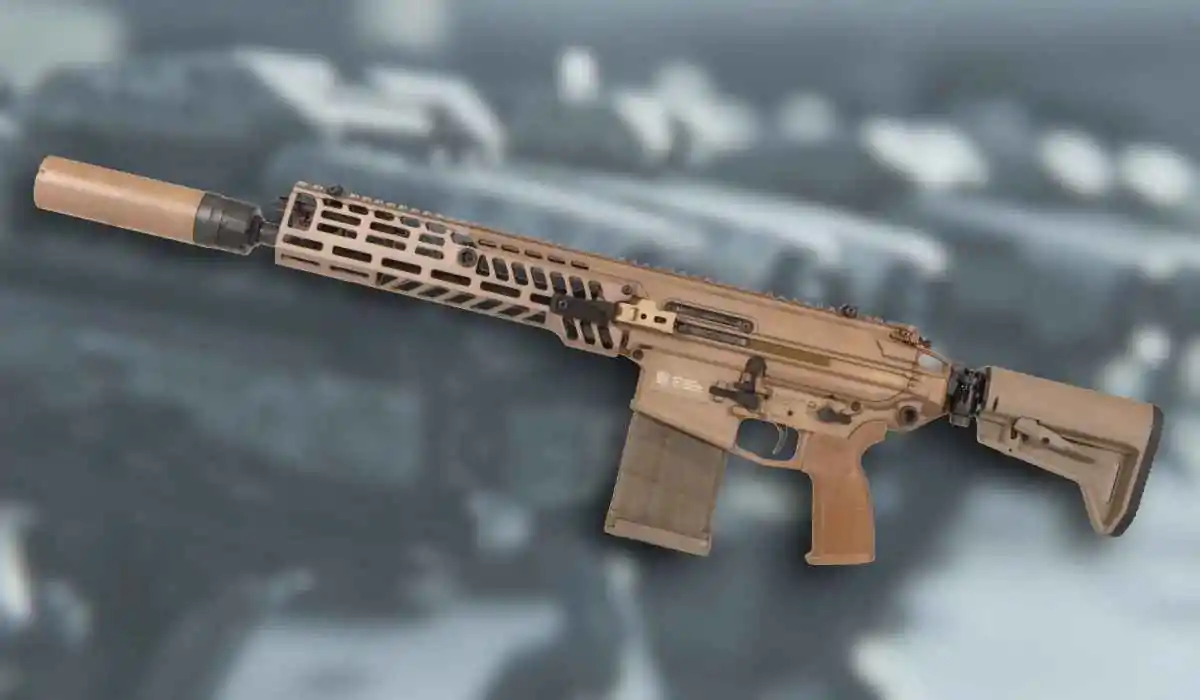
XM7 serves as the replacement for the M4 Carbine, building on decades of combat experience while embracing modern ballistic and ergonomic advancements.
Soldiers familiar with AR-style platforms will find the controls intuitive, reducing training time and easing transition.
- Barrel length: 13-inch barrel for better maneuverability in close quarters
- Controls: Fully ambidextrous, accommodating both left- and right-handed users
- Stock: Collapsible design allows for a customizable fit
- Caliber: Chambered in 6.8mm for greater range and terminal effectiveness
- Design: AR-style ergonomics preserve familiarity while integrating modern features
XM7’s 6.8mm round maintains energy at longer ranges, enabling engagements where 5.56mm rounds would struggle. That increased energy also aids in penetrating modern body armor and hardened cover.
XM250 Automatic Rifle
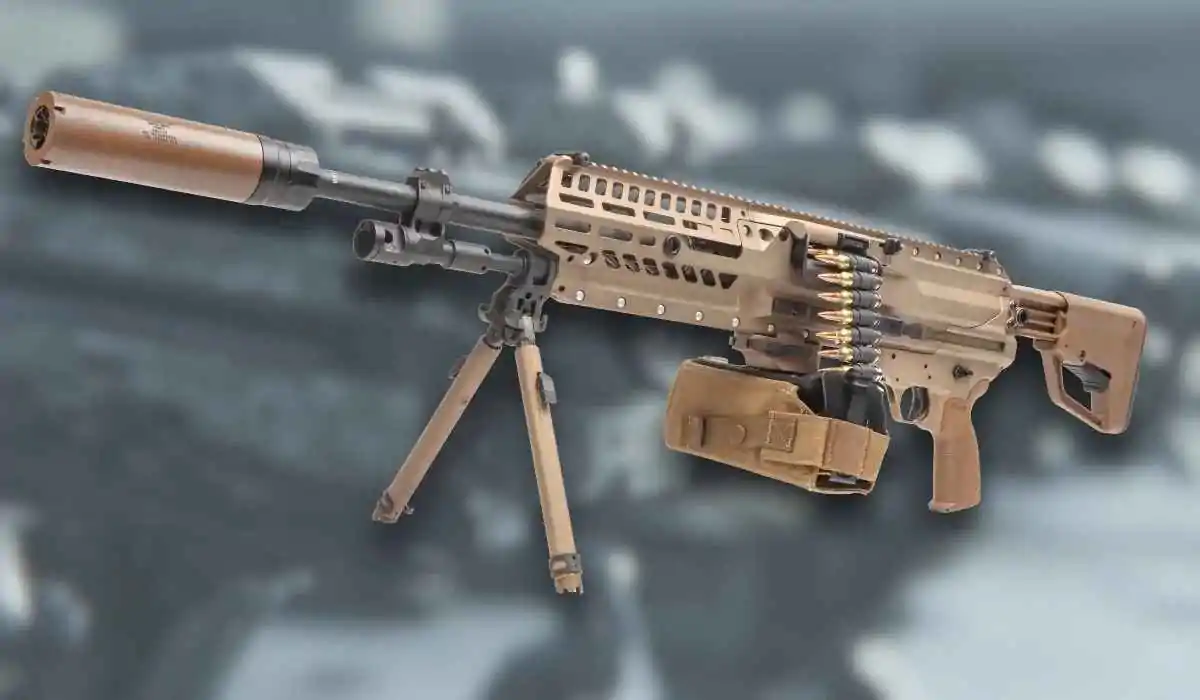
Replacing the M249 SAW, XM250 brings a leap forward in automatic firepower by reducing the weight burden and increasing combat efficiency.
Built for sustained fire, it balances firepower with controllability, which enhances both accuracy and agility under stress.
- Fire mode: Select-fire capability offers semi-automatic and automatic operation
- Feeding system: Belt-fed mechanism ensures high-volume fire support
- Weight: Lighter than the M249, reducing fatigue during prolonged missions
- Modularity: Advanced rail system enables rapid attachment of accessories
- Suppression: Integrated suppressor lowers visual and auditory signature
Performance improvements allow users to remain mobile while delivering suppressive fire, a critical factor in fast-moving tactical scenarios. Its design reflects lessons learned over decades of machine gun deployment in modern conflicts.
XM157 Fire Control System
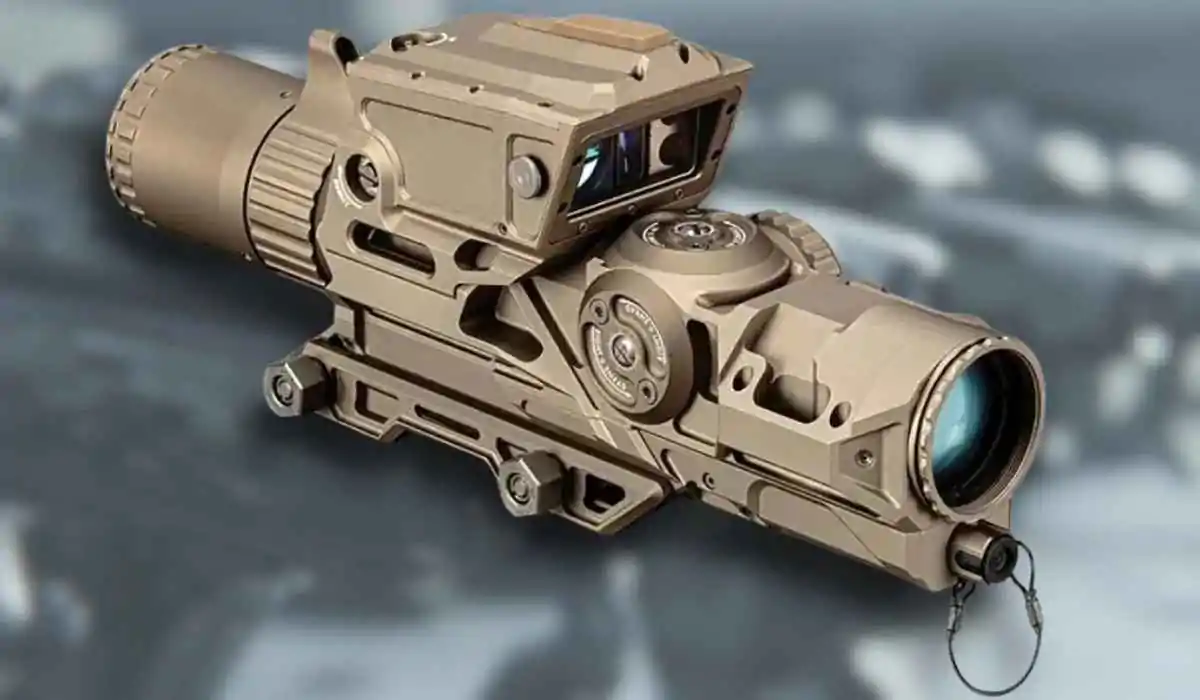
Optics no longer serve a single function. XM157 introduces a multi-role fire control system that enhances situational awareness and precision across every engagement.
Developed by Vortex Optics, the system directly responds to the need for fast, data-driven marksmanship.
- Laser rangefinder: Measures target distance instantly for ballistic compensation
- Ballistic calculator: Computes real-time firing solutions based on variables like range, angle, and wind
- Compass: Provides directional orientation for coordinated movements
- Targeting assistance: Real-time aids improve hit probability under stress
First-round impacts are critical in close combat, and XM157 significantly improves the odds.
Users benefit not just from magnification but also from actionable data delivered directly through their optic. Each shot becomes more informed, deliberate, and effective.
Transition to 6.8mm
The army’s decision to adopt a 6.8mm intermediate cartridge marks a decisive break from the decades-long dominance of the 5.56mm NATO round.
Developed to address deficiencies in range and terminal performance, the new cartridge is engineered to defeat modern body armor and deliver increased lethality at distances once deemed outside the effective reach of standard infantry rifles.
Ballistic engineers crafted the 6.8mm round to carry more energy downrange while maintaining a manageable recoil impulse for the shooter. Increased sectional density and a superior ballistic coefficient allow it to retain velocity and stopping power after penetrating cover or engaging targets at extended ranges.
Environmental adaptability plays a critical role in ammunition design. Soldiers face missions in frozen tundras, blistering deserts, humid jungles, and congested city streets. One of the main advantages of the 6.8mm round is its consistent terminal performance across those settings.
Several ammunition variants support the full spectrum of training and combat applications.
- General-purpose (GP): Standard combat load, designed for optimal performance in most engagements.
- Tracer: Provides visual tracking for correction during automatic fire or night operations.
- Blank: Used for training exercises involving live squad weapon manipulation without live fire.
- Marking rounds: Suitable for force-on-force training environments with reduced injury risk.
One of the trade-offs is a reduced number of rounds per soldier loadout compared to 5.56mm, due to increased cartridge size and weight. Despite that, each round is expected to do more damage, requiring fewer hits to neutralize threats.
Accuracy, armor penetration, and retained energy at range mitigate the concerns surrounding this lower round count. Field reports suggest improved hit probability and overall confidence among soldiers equipped with 6.8mm systems.
Deployment Strategy and Operational Impact
Initial deployment of the Next Generation Squad Weapon (NGSW) system began with the 1st Battalion, 506th Infantry Regiment, stationed at Fort Campbell.
The selection of this unit allowed leadership to observe real-world integration within a line infantry battalion known for its combat experience and rapid deployment readiness. Fielding to this group served as a controlled rollout to evaluate training efficiency, soldier adaptability, and system reliability.
Army planners prioritized distribution to Pacific-based units and Special Operations Forces due to the nature of threats in that theater.
Growing tensions in the Indo-Pacific, particularly concerning China’s regional ambitions and North Korea’s ballistic advancements, demanded a combat edge.
NGSW is expected to give U.S. forces the ability to outmatch adversaries in small-unit engagements, where seconds and accuracy matter.
- Proximity to high-threat environments — Forward-deployed units in Guam, Hawaii, and Alaska stand next in line due to response time requirements.
- Special Operations capability upgrades — Elite units benefit from immediate overmatch, with NGSW increasing stealth, accuracy, and lethality.
- Modern threat alignment — Prioritization aligns with national defense strategies that focus on near-peer competition and regional deterrence.
US Army Begins Fielding Next Generation Squad Weapons https://t.co/Ft3RuHaQ1B pic.twitter.com/eCVW0jFynj
— Soldier Systems (@soldiersystems) September 21, 2023
Combat Training Centers
Standardization of NGSW across regular Army units will proceed as training modules, maintenance protocols, and logistical frameworks mature.
Combat Training Centers are already integrating NGSW systems into their rotational exercises, allowing soldiers to gain hands-on familiarity in high-pressure simulations.
- Reduction in malfunctions and stoppages during high-round-count engagements
- Faster target acquisition due to advanced optics and improved ergonomics
- Improved force survivability with suppressor-equipped squad weapon, reducing signature and flash
- Better performance in extreme conditions such as jungle humidity and arctic cold
Commanders forecast a more capable force, one that can operate with fewer resources, achieve higher effectiveness, and adapt to the increasing pace of modern conflict.
NGSW, in its deployment strategy, reflects both a technical and tactical evolution that prepares infantry for prolonged and high-intensity operations.
Design Evolution and Industry Role
Sig Sauer’s development of the XM7 and XM250 traces back to its proven platforms, the MCX-Spear and LMG-6.8. These designs reflect years of continuous refinement aimed at delivering advanced firepower without sacrificing operational familiarity.
Rather than chasing experimental ideas with no battlefield testing, Sig Sauer prioritized soldier usability, modularity, and ruggedness.
Earlier attempts at small arms modernization met less success. Programs like the Advanced Combat Rifle (ACR), XM8, and XM29 aimed to leap forward in capability but collapsed due to a combination of unrealistic goals, budget issues, and negative soldier feedback.
- Excessive complexity in operation and maintenance
- High production costs that exceeded budget limits
- Poor soldier acceptance due to unfamiliar ergonomics or weight issues

Sig Sauer learned from these missteps. Company engineers kept innovation grounded in practical performance metrics. Existing soldier habits were respected in control layout and balance, while improvements were targeted at lethality, range, and reliability.
Past experience also played a decisive role. Sig Sauer had already won Army trust by securing the Modular Handgun System (MHS) contract.
It’s M17 and M18 handguns replaced the Beretta M9 and became standard-issue sidearms across all service branches.
- Focus on modularity: A key reason M17/M18 won was their adaptability to various missions and user preferences
- Supply chain readiness: Sig Sauer demonstrated an ability to meet high-volume production demands
- Training and sustainment: Handgun rollout included extensive support, easing the transition at the unit level
Those same lessons fed directly into the NGSW program.
Challenges and Considerations
Adoption of the XM7 and XM250 brings forward undeniable performance improvements, but it also presents a series of logistical, physiological, and strategic challenges that cannot be overlooked.
One major concern centers around the added weight of the XM7 compared to the M4 Carbine. Infantry troops already operate under extreme physical burdens, and any increase in equipment weight can affect:
- Endurance
- Speed
- Mission effectiveness
XM7, with its suppressor and enhanced optics, weighs significantly more than its predecessor, making it less ideal for prolonged foot patrols or rapid maneuvers. Combined with full combat loadouts, soldiers could find themselves carrying upwards of 15 to 20 additional pounds.
Recoil is another important factor. XM7 fires the 6.8mm round, which behaves more like 7.62mm NATO in terms of energy. Soldiers accustomed to the softer shooting 5.56mm M4 will face a learning curve.
Marksmanship may initially suffer as troops adjust to the recoil impulse, requiring more intensive and tailored training cycles. Units may need to invest more time in drills emphasizing recoil management, sight picture recovery, and follow-up shot accuracy.
The shift to 6.8mm also affects ammunition loadouts, which leads to a reduced round count per soldier. Traditional 5.56mm magazines hold 30 rounds, but due to the increased size and weight of 6.8mm cartridges, troops may carry fewer rounds overall.
- Higher lethality per round: Each 6.8mm bullet delivers more energy and penetration potential.
- Lower round capacity: Fewer magazines per load or reduced number of rounds per magazine.
- More careful engagement: Precision becomes more valuable than volume, requiring elevated levels of fire discipline.
The Army has officially fielded its brand-new Next Generation Squad Weapon rifles to its first unit, bringing an end to the service’s decades-long effort to replace its M4 and M16 family of military firearms.https://t.co/Oxm4BkrfVF
— U.S. Army Pacific (@USARPAC) April 1, 2024
Procurement costs
Procurement costs are another critical dimension. Modernization comes at a price, and NGSW is no exception.
- $4.5 billion on weapon systems (XM7 and XM250 units, spare parts, and accessories)
- $2.7 billion on optics (including the XM157 fire control system and its integrated technology suite)
Such an investment demands consistent Congressional backing, long-term budgeting, and ongoing performance validation. Cost overruns, delays in production, or unfavorable evaluations in combat zones could influence future appropriations.
Other logistical issues loom as well. Armories, training centers, and maintenance units must all adapt to new tools and standards. Technical manuals, repair procedures, and supply chain networks will require comprehensive updates.
Additionally, support for legacy systems will need to continue throughout the transition period, placing further strain on resources.
Final Thoughts
NGSW delivers substantial gains in accuracy, lethality, and combat readiness.
XM7 and XM250 serve as tangible steps toward equipping infantry for next-generation threats.
Increased firepower, improved optics, and better ballistic performance enhance survivability in complex environments.

